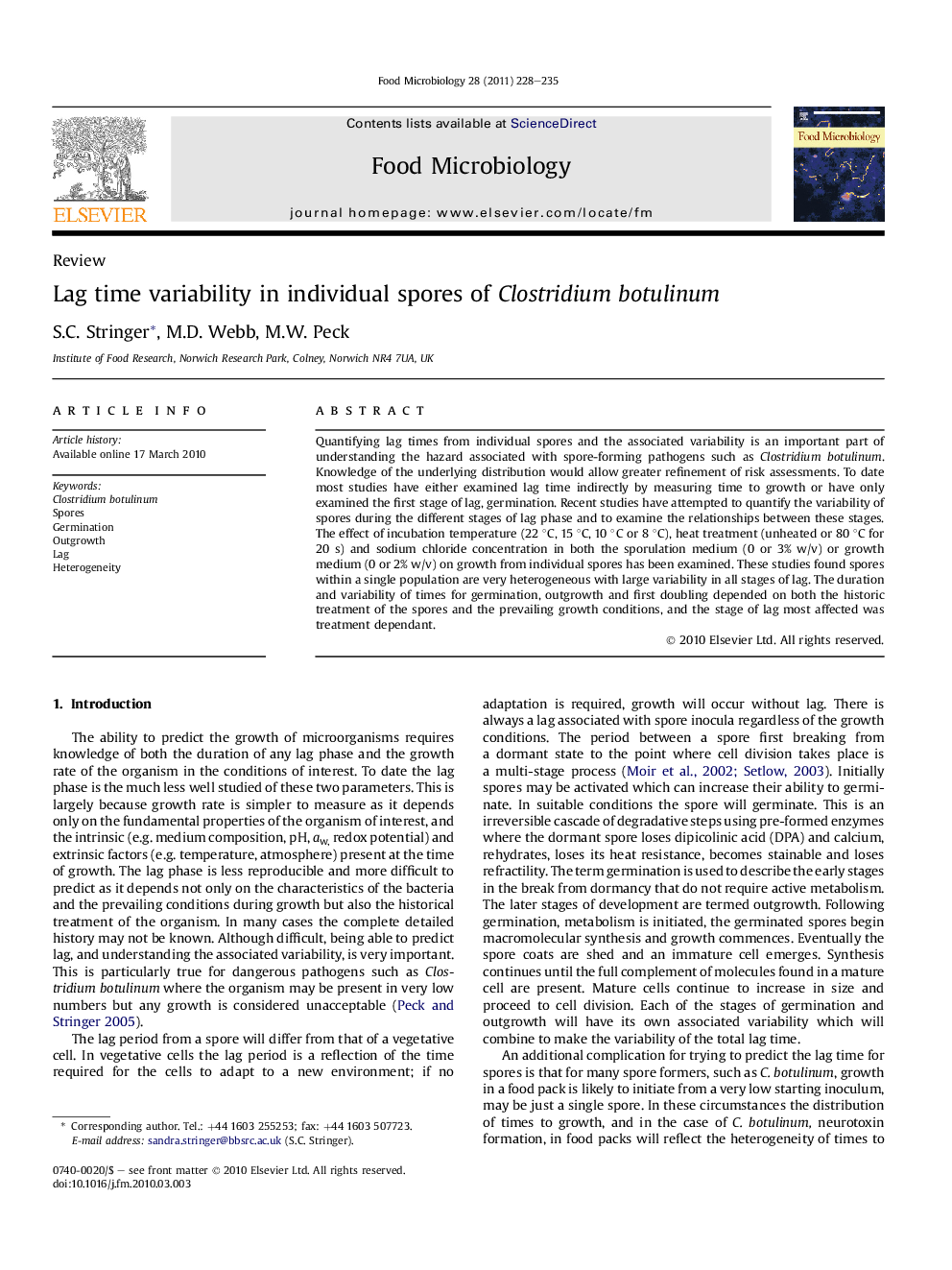| Article ID | Journal | Published Year | Pages | File Type |
|---|---|---|---|---|
| 4363236 | Food Microbiology | 2011 | 8 Pages |
Quantifying lag times from individual spores and the associated variability is an important part of understanding the hazard associated with spore-forming pathogens such as Clostridium botulinum. Knowledge of the underlying distribution would allow greater refinement of risk assessments. To date most studies have either examined lag time indirectly by measuring time to growth or have only examined the first stage of lag, germination. Recent studies have attempted to quantify the variability of spores during the different stages of lag phase and to examine the relationships between these stages. The effect of incubation temperature (22 °C, 15 °C, 10 °C or 8 °C), heat treatment (unheated or 80 °C for 20 s) and sodium chloride concentration in both the sporulation medium (0 or 3% w/v) or growth medium (0 or 2% w/v) on growth from individual spores has been examined. These studies found spores within a single population are very heterogeneous with large variability in all stages of lag. The duration and variability of times for germination, outgrowth and first doubling depended on both the historic treatment of the spores and the prevailing growth conditions, and the stage of lag most affected was treatment dependant.
